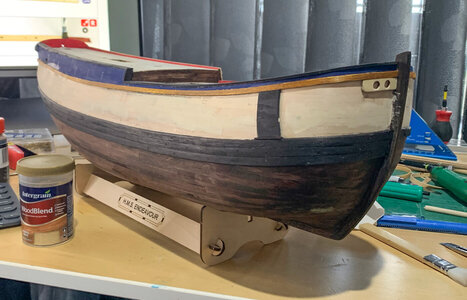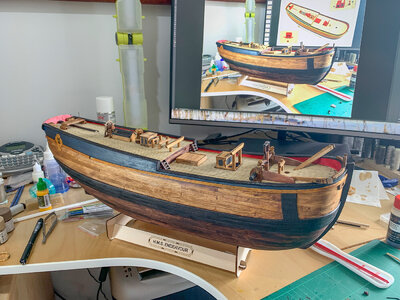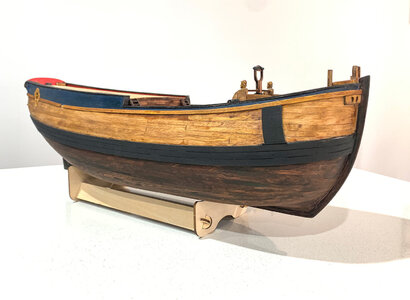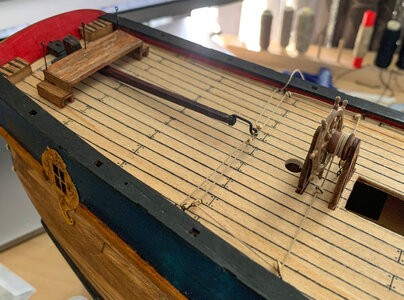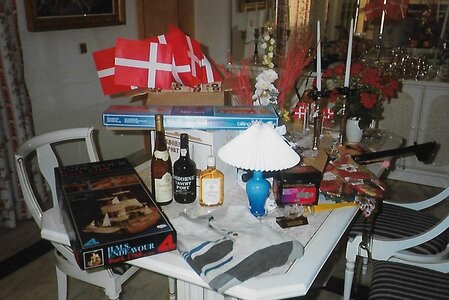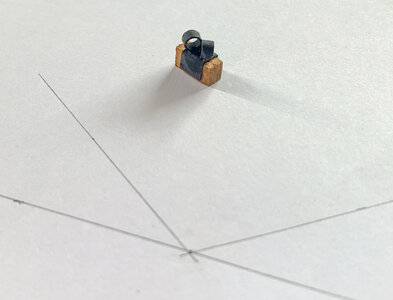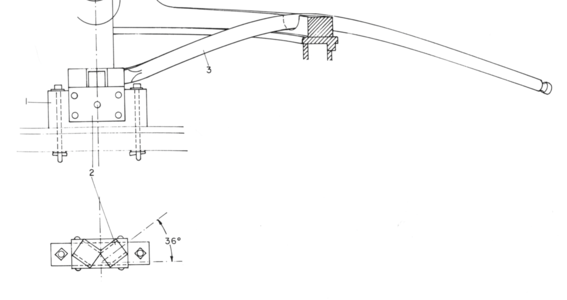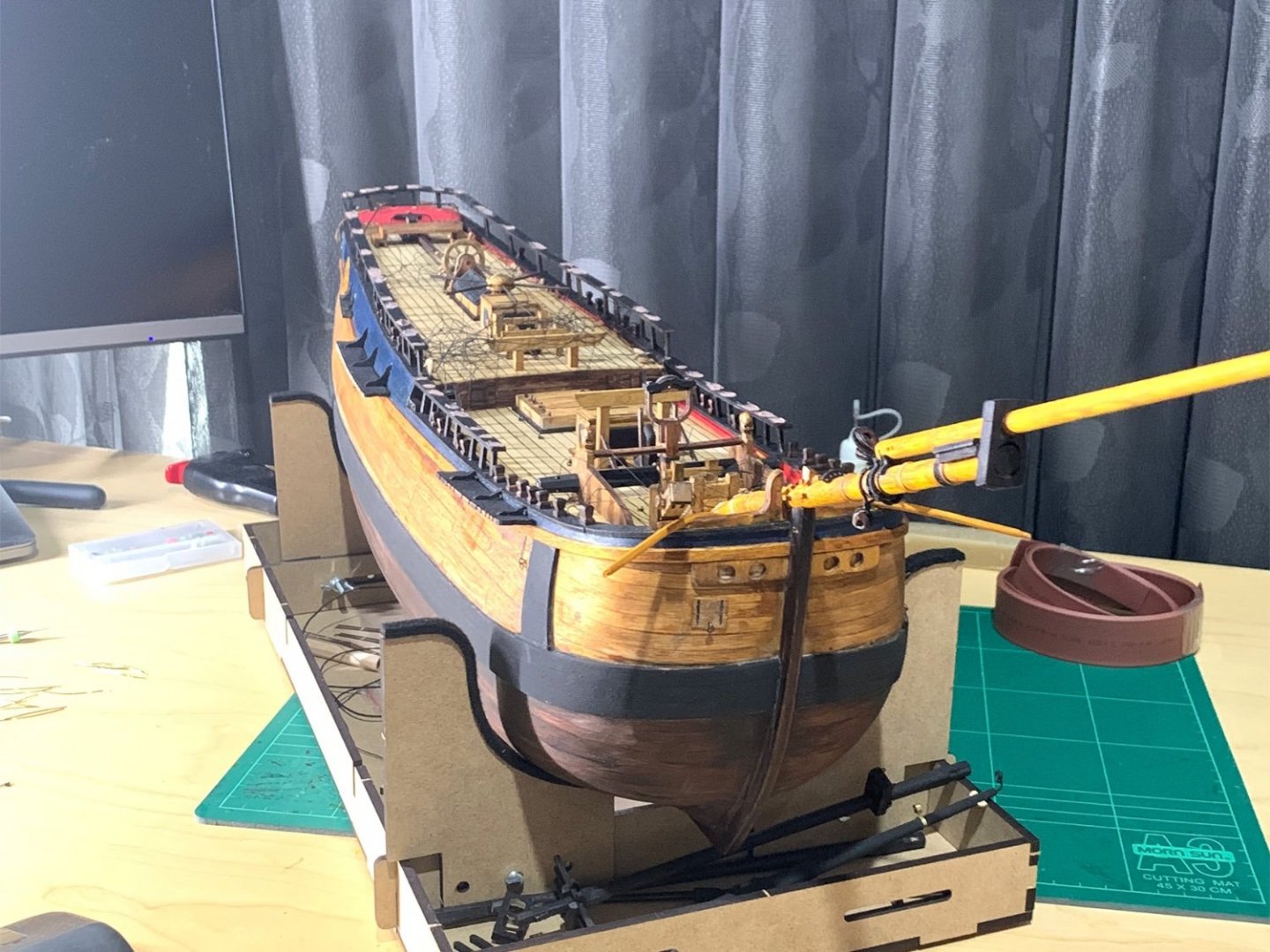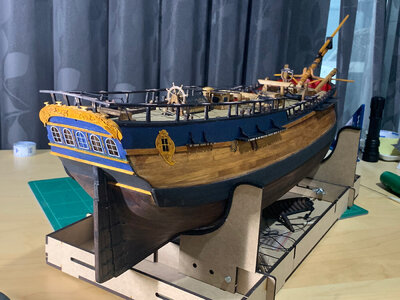HULL Construction: 22 Jan 2022
Each frame of the hull comes in multiple pieces. Unfortunately the laser cutting has made the pieces a very loose fit so care needs to be taken to:
1. Ensure the frame is symmetrical around the centreline and
2. The gap between the sides is the right measurement to fit the deck beam to be fitted later.
I chose to fit the deck beam when assembling the frame pieces to simplify the process, however this cannot be done on all frames to look ahead in the instructions to check which ones and be glued and which ones are to be temporarily taped together.
Assembly is fairly straight forward though care needs to be taken to assure the false keel is straight and that the frames sit symmetrically around the centreline.
Everything started to become more rigid once the four deck pieces go in. There will be a need to do quite a bit of fairing to get frames and longitudinal stiffeners faired for planking.
It's at this stage that the deck planking is fixed in place. I continued using the technique I used on PORT JACKSON for the main deck - run a permanent marker down the edge of the planking material and lay in full length strips stating at the centre and moving to the edge. For the ForDeck and Quarterdeck I lay in rim planking so that deck planks could be cut in to prevent sharp angled points.
The deck joins and nails were all marked in using a 0.1mm permanent marker.
Once interior bulwark planking was laid and painted red, it was time for planking.
This is a much larger vessel than my PORT JACKSON and the plank material is thicker so it is going to take time.
Oh yes. I was bored waiting for somme of the hull work drying so I made a start on the Foremast; but that's another storey
View attachment 290035
View attachment 290036

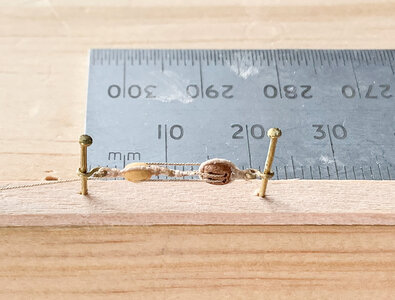




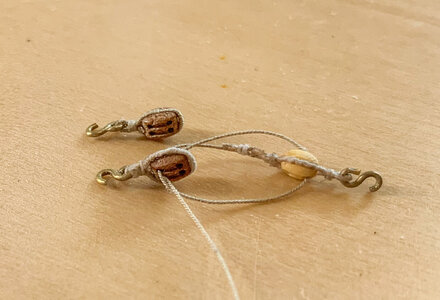
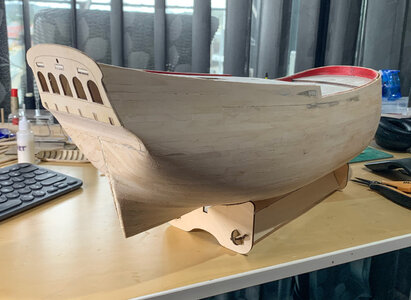
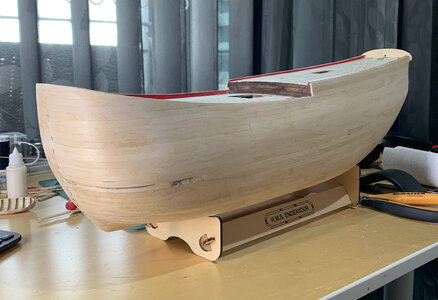
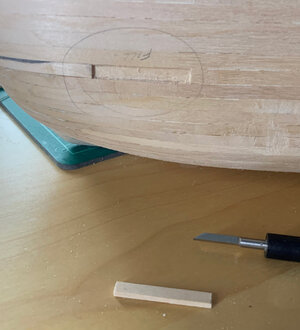
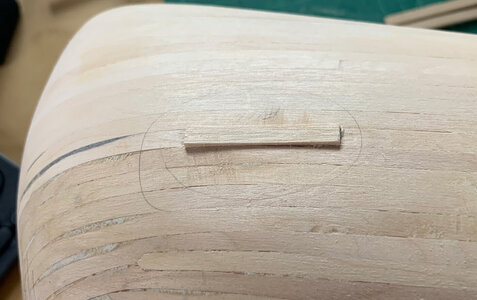
 protection is made from the whale material also pertained black before fitting. I have included a bolster as identified by Marquardt but its dimensions/shape are a bit of a guess.
protection is made from the whale material also pertained black before fitting. I have included a bolster as identified by Marquardt but its dimensions/shape are a bit of a guess.